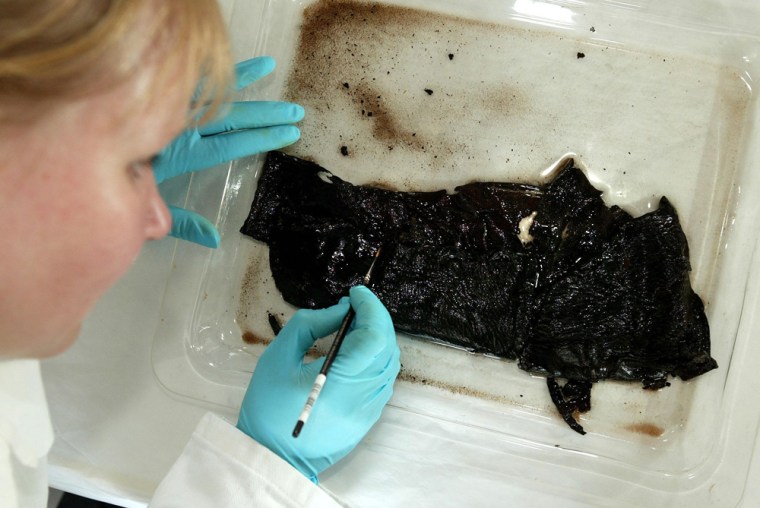Perhaps it was left for symbolic reasons, or simply forgotten in the mud. Archaeologists said Tuesday they had found a 2,000-year-old shoe hidden in a hollow tree used to construct an ancient well near Wellington in southwest England.
"As far as we know, this is the oldest shoe ever found in the United Kingdom," said Stephen Reed, who led the team from Exeter Archaeology that made the find on the site of a modern day quarry. "It is reasonably well-preserved, with stitch and lace holes still visible in the leather."
The shoe is being studied by conservationists in Salisbury, southwest England, and is expected to be displayed at the Royal Albert Memorial Museum in Exeter.
It was found when the owners of Whiteball Quarry began working in the area, where a Bronze Age iron-smelting site had been discovered in 1989.
Nearby, researchers from Exeter Archaeology found two water troughs, along with two timber-lined wells, preserved by waterlogging and probably dating from the early part of the Iron Age (700 BC to AD 43).
One of the wells had been constructed over a spring using a hollowed tree trunk set into the ground. "The tree trunk was removed from the site so that its contents could be excavated under laboratory conditions," Reed said. " The truly remarkable discovery of the shoe was made when this work was being undertaken by the Wiltshire Conservation Center."
The shoe is nearly 12 inches long, suggesting its owner was male, archaeologists said.
It may have been left for symbolic reasons when the site was closed or simply been lost in the mud within the spring. "The importance about this shoe is that these sort of things don't really survive at all on the archaeological record, usually because they rot down," Reed said.
He said the shoe was the first of its kind to be found in Britain, while even in Europe they numbered only "in the tens."
